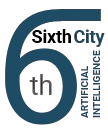Stop Waiting: Why “Early” AI Movers Will Win the Long Game
The Hesitation Trap
We hear it a lot: “AI changes too fast—why start now when better tools are coming?” On the surface, that feels like a smart pause. But in reality, it can leave your business lagging while others quietly build an early lead.
Many companies are already in what we call Phase 1: Assess & Align. They’re mapping how their work gets done, cleaning up messy data, and getting their teams used to working with AI. That’s what lays the foundation for real progress later.
Recent surveys show that two-thirds or more of small businesses have already put some form of AI to work. Most use it in customer service, HR, or finance—and the vast majority say it’s worth it. Only 1% say they’ve fully matured their AI efforts, which means there’s still a wide-open chance to catch up—or even leap ahead.
What Phase 1 Really Looks Like
Process Mapping
- Write out how tasks actually happen—who approves invoices, where data is stored, what slows things down.
- Use that to create step-by-step guides (SOPs) so AI can follow clear instructions and know when to ask for help.
Finding Good First Steps
- Look at which workflows are repetitive, rule-based, and involve structured data. That’s where AI shines.
- Pick one or two small, low-risk pilots to learn from. Don’t try to automate your entire system right away.
Culture Shift: From Saving Headcount to Freeing Up Time
- Position AI as something that gives your people more time to think, create, and improve—not just a way to cut roles.
- Reward folks who document what they do or suggest ways to streamline. Today’s challenge isn’t resistance—it’s a shortage of people who know how to apply AI smartly.
Why Starting Now Still Matters
- Learning compounds. The sooner your team starts prompting and testing, the sooner you build up internal know-how.
- People adapt better over time. Teams that grow with the tech won’t panic when more advanced systems arrive.
- Your process docs get sharper. Even a pilot that doesn’t take off still leaves you with better training materials and audit trails.
- People notice. Early AI efforts show clients and job candidates that you’re not standing still.
“But Won’t the Tools Be Better Next Year?”
Absolutely. But that’s the point. If you’ve already built the foundation—mapped processes, tested pilots, trained staff—you’ll be ready to drop in whatever’s next. The folks who wait for “perfect” tools will still be figuring out where their data lives.
The Real Takeaway
Early AI adoption gives small businesses the advantage of an adapted culture -- the way your people think about, accept AI and have learned to use AI -- now; and while your competitors who waited longer struggle to get AI out of the starting blocks, you will already be informed, adapted and ready to move confidently into the AI Agent-Boss Stage. Going early isn’t about chasing hype—it’s about getting your team, your data, and your workflows ready for what’s coming. Make no mistake, AI use by every organization in the next 3 years will be as ubiquitous as email is today.
Any mistake you make now—testing a tool that gets replaced, trying something that doesn’t stick—will be far outweighed by:
- A workplace that treats AI as part of the routine
- Clear documentation of how your business works
- A team that knows how to talk to AI, tweak it, and turn it into a real teammate.
Waiting may feel safer, but skipping Phase 1 just means falling behind when others are already building momentum. It’s pushing off the hard part until it’s even harder—and watching others move faster when it matters most.
Want a simple way to start? Sixth City AI’s Readiness Assessment helps you turn everyday know-how into an actual plan—so the next time AI levels up, your business is already ready.





